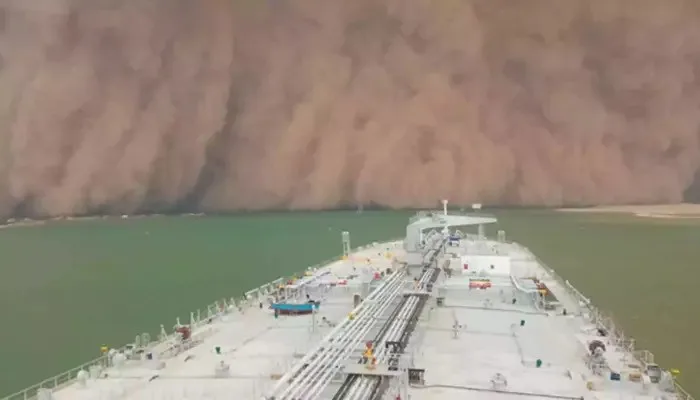A powerful sandstorm swept across southern Israel on Wednesday, plunging entire regions into darkness and choking the skies with thick, reddish dust. The Negev Desert and the city of Beersheba bore the brunt of the storm as visibility collapsed to near zero and fierce winds battered the landscape.
Orange Skies and Apocalyptic Scenes
Videos flooded social media, capturing the scale and severity of the storm. One viral clip showed a towering wall of dust racing across the desert, swallowing buildings and roads in seconds. Users described the storm as “apocalyptic”, with others calling it “a scene straight out of a sci-fi movie.”
“INSANE sandstorm sweeps southern Israel, West Bank amidst raging wildfire crisis.”
— RT (@RT_com), May 1, 2025
Residents Trapped Indoors
Locals in Beersheba reported red-tinted skies and suffocating air quality. The Israeli Health Ministry urged residents to stay indoors, wear masks, and avoid outdoor exposure. Hospitals treated dozens for breathing difficulties, especially among the elderly and children.
Meteorologists from the Israel Meteorological Service confirmed the sandstorm was fueled by hot, dry air currents from the Sinai Peninsula. While such storms are seasonal, experts noted this one was unusually severe and moved with alarming speed.
Wildfires Complicate the Crisis
The sandstorm hit as wildfires already raged across parts of Israel and the West Bank. The combination of heat, smoke, and dust worsened visibility and hampered firefighting efforts. Emergency services remain on high alert as multiple crisis zones unfold simultaneously.
Environmental experts warned of long-term effects, including damage to crops, respiratory health risks, and disruptions to daily life. Farmers in the Negev reported blown-away topsoil, putting spring harvests in jeopardy.
Climate Pressure Mounts
The back-to-back wildfires and sandstorm have raised alarm bells among climate analysts, who stress the urgency of climate adaptation policies in Israel and across the Middle East.
“This isn’t just a weather event. It’s a warning,” said environmental researcher Dr. Talia Cohen.
“Extreme climate patterns are becoming the new normal.”
Follow us on Google News, Instagram, YouTube, Facebook,Whats App, and TikTok for latest updates
